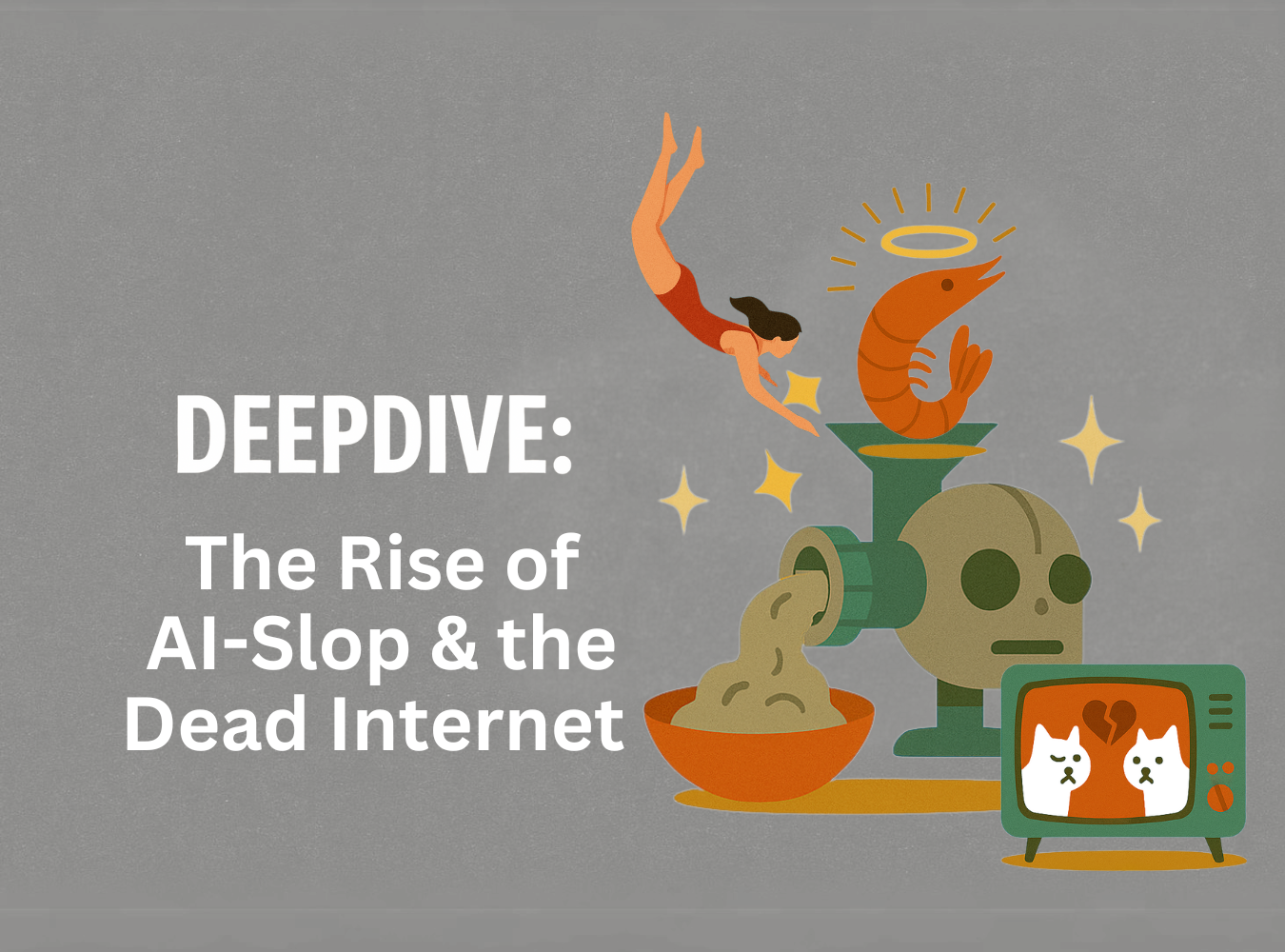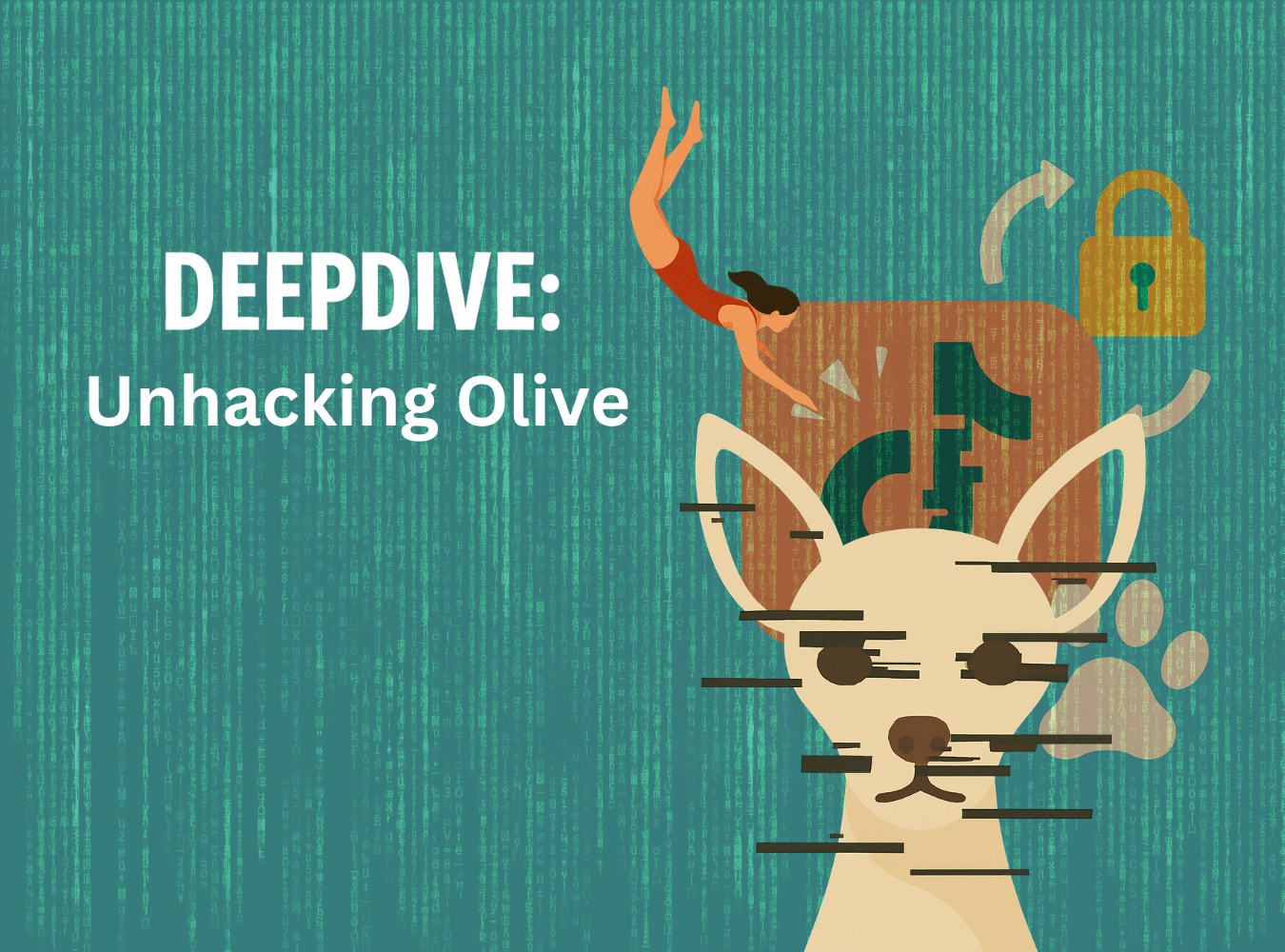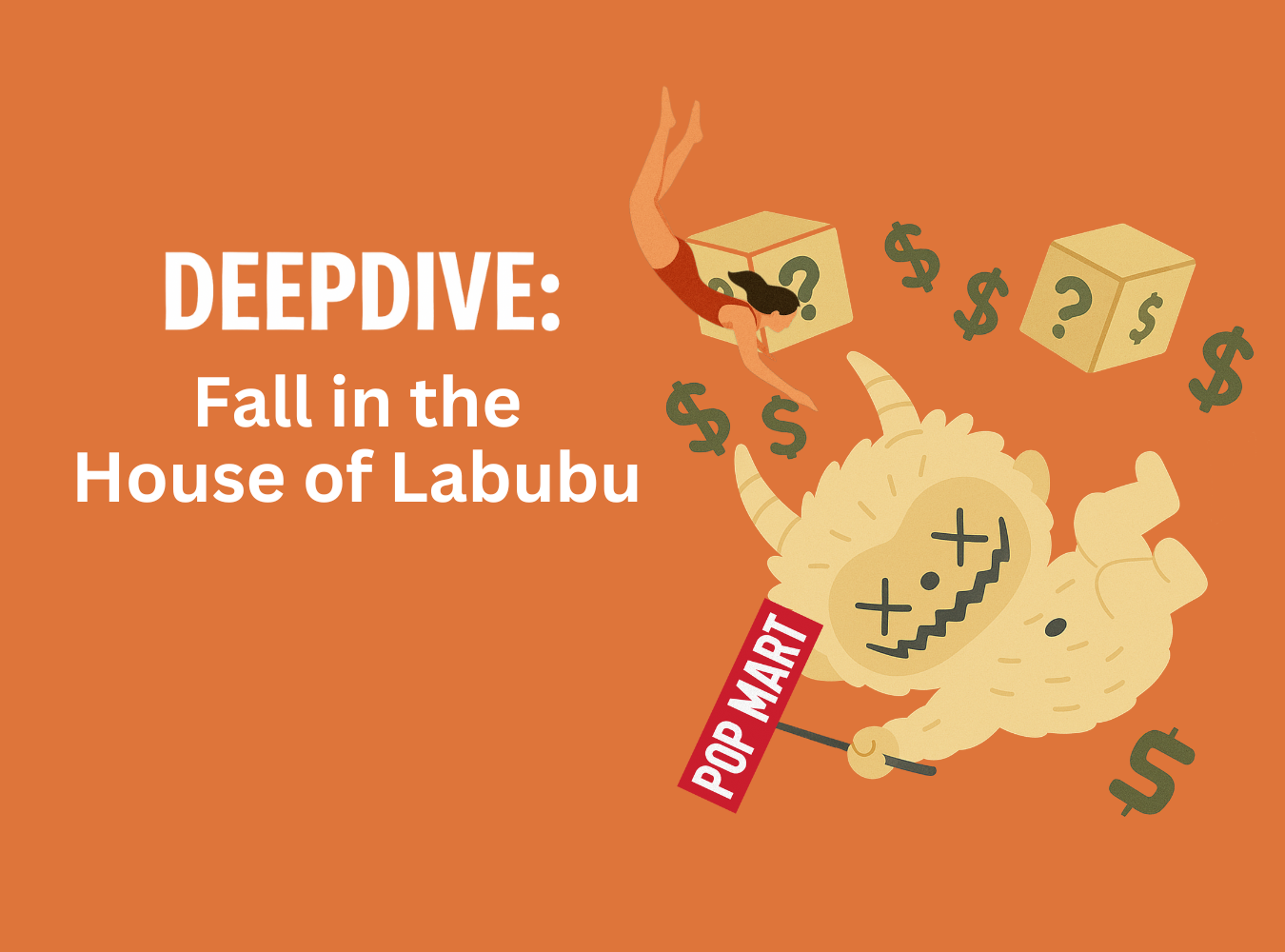Shrimp Jesus, Cat Soap Operas, and “Great Photography”.
The internet has always had a spam problem, but 2024–2025 introduced a new flavor: AI Slop. Critics and users alike are using this term to describe the tidal wave of low-effort, mass-produced AI content now clogging feeds across Facebook, YouTube, and beyond. The problem isn’t just quantity. It’s sameness. Banal AI images of Jesus, endless AI-written articles, and surreal cat soap operas are all competing for clicks. The result? A digital landscape that feels less like a creative frontier and more like a landfill.
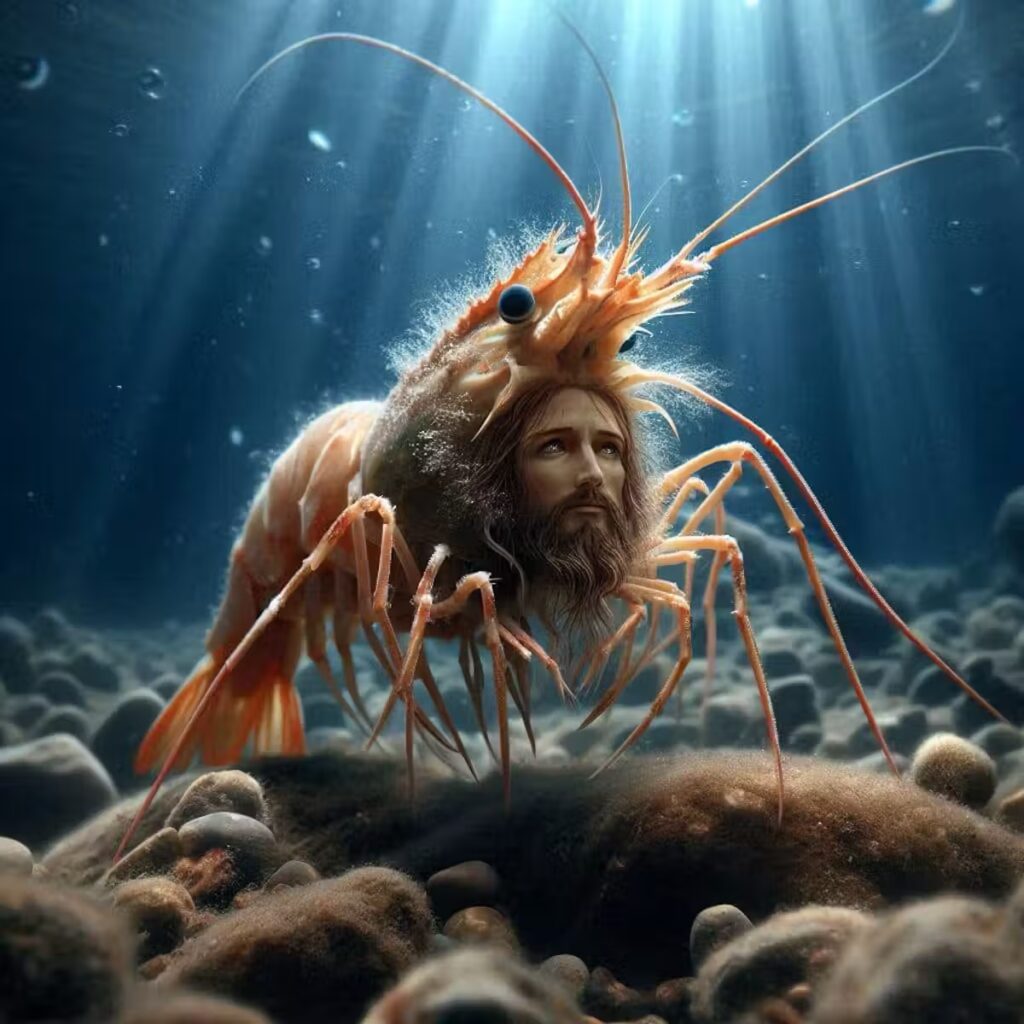
What Exactly Is AI Slop?
“AI slop” refers to content produced in bulk by generative AI tools: images, videos, and text engineered for engagement but stripped of originality or craft. It’s the spammy cousin of digital creativity: content that looks passable at first glance but quickly reveals itself as hollow.
As philosopher Jonathan Gilmore put it, this kind of content tends toward the “incredibly banal, realistic style” that’s easy to consume and easier to ignore.
If you’ve been on Facebook lately, you’ve probably seen something bizarre: AI-generated depictions of Jesus holding shrimp, wielding tentacles, or otherwise distorted into surreal mashups. Dubbed “Shrimp Jesus,” these images have gone viral on pages with generic names and broken-English captions.
Why? Engagement. Scammers and spammers have figured out they can farm likes and shares with bizarre, emotionally sticky imagery. A Stanford-Georgetown study found entire networks of pages pumping out unlabeled AI images of Jesus to grow audiences and then monetize them.
The problem is that moderation systems aren’t built for absurdist spam. Unless it violates rules outright, it slips through. And in the meantime, Facebook is left looking more like a digital flea market of nonsense than a community hub.
@meowhero1 Pregnant Cat Cheats and Ruins Her Marriage! 😱 A Feline Drama You Won’t Believe!#cat #viral #meow #story #aicat #love
♬ original sound – Meow Hero
Cat Soap Operas and the Rise of AI Video Slop
Meanwhile, over on YouTube & TikTok, the slop is scaling into video. In 2025, nearly 10 of the platform’s 100 fastest-growing channels were AI-generated. The most notorious trend is cat soap operas.
Imagine a 30-second to 3-minute clip where a buff, human-bodied cat cheats on its wife, gets attacked with an axe, and narrowly escapes drowning, all set to Billie Eilish’s “What Was I Made For?” These clips rack up millions of views in days. They’re addictive, grotesque, and algorithmically perfect.
YouTube has begun stripping monetization from some of these channels or removing them outright, but the slop keeps multiplying. Especially because the target audience for them is locked in: kids.
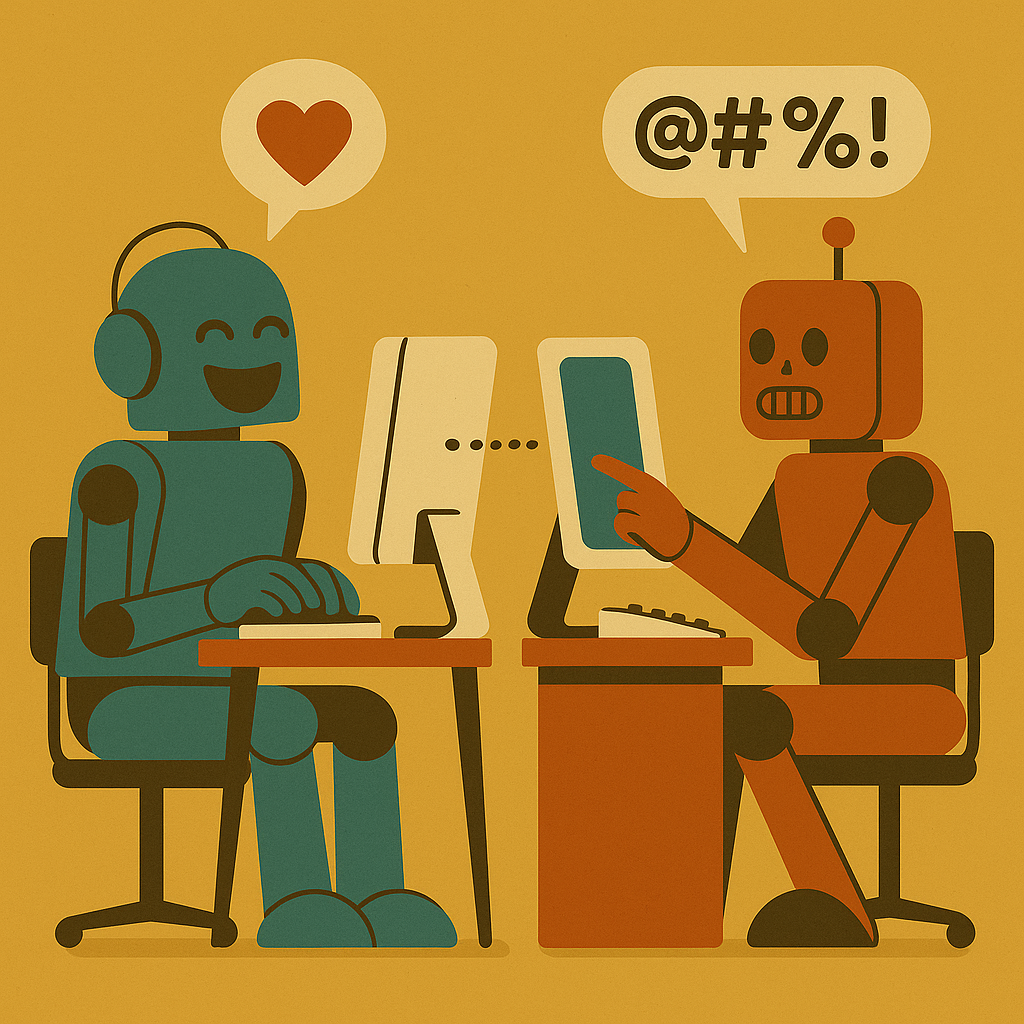
Dead Internet Theory: Amen and Outrage
Here’s where the cultural panic sharpens. Dead Internet Theory is a conspiracy-turned-cultural critique that claims most of what we see online is no longer made by humans but by bots and algorithms.
In its original form, it sounded paranoid. But in the era of Shrimp Jesus memes and AI cat soap operas, it suddenly feels less like science fiction and more like foreshadowing.
A January 2025 survey published on arXiv provides fresh academic weight to this idea, arguing that social media is increasingly shaped by artificial interactions driven by corporate agendas. Platforms prioritize engagement metrics over genuine human connection, eroding trust and diminishing content diversity. Doing so enables a “dehumanized internet experience” that values virality over authenticity.
The theory’s core fear is that the internet will become an uncanny echo chamber of machine-generated noise. This is exactly what critics see in AI slop. Content farms are spitting out filler, platforms are rewarding volume over quality, and users are left wondering: How much of this feed is even real anymore?
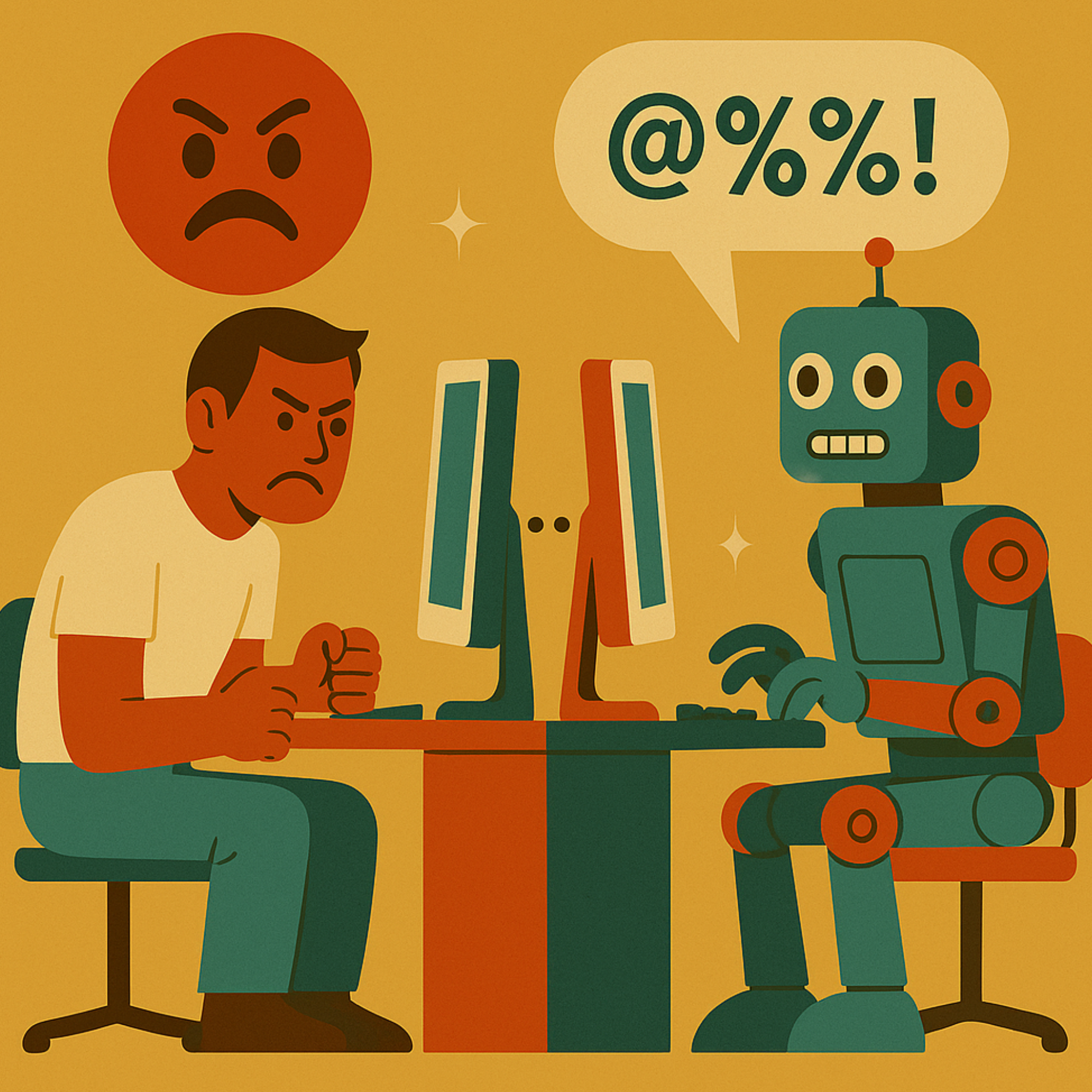
Audiences Are Tuning Out
If the platforms aren’t fed up, the audiences are.
- Engagement with AI-generated articles dropped by 40% in 2024, according to Olin researchers.
- NP Digital reports human-generated content earns 5.44× more traffic than AI-generated material, while 38% of consumers openly express skepticism about AI-created content.
- Instead of killing off human creators, demand for freelancers surged in 2025, especially for writers, designers, and video editors who can deliver originality and emotional resonance.
The bots may dominate feeds, but audiences still crave humanity.

“Great Photography” on X is popular with dog-focused accounts
Case Study: Engagement Farming as a Political (and Commercial) Trojan Horse
“Great photography” and “great photograph”. I started tracking the terms last year because I saw fake and AI-generated content spammed in Chihuahua Facebook groups. And yes, I am a member of enough Chihuahua groups to notice when the posts get weird. These AI-slop photos of unrealistically extra-tiny, bug-eyed dogs with sad looks always earned the same emoji or one-word comments underneath. Sometimes hundreds of them. All with the same caption – “great photography” and “great photograph”.
When I began listening on X, the trend became even clearer. The “great photography” and “great photograph” datasets aren’t just internet oddities. They’re part of a larger network of bot-run accounts across platforms. The simple keywords make it easy for even the most rudimentary programs to scam platforms and execute actions with little human oversight. This means bots can be set up to automatically like, retweet, or comment with stock phrases at scale. This creates the illusion of thriving communities around slop content when it’s nothing more than automated loops feeding Engagement back into the system.
Both datasets reveal nearly identical behavior: thousands of posts built around AI-generated images, each paired with captions like “great photography” or “great photograph.”, maybe with an emoji or two thrown in for good measure. They appear to have an authentic appreciation for digital art, especially among the over-65 crowd. But underneath, they’re engagement farming operations.
Nearly 80% of posts in the “great photography” dataset are AI-generated images. In comparison, the remaining 20% were links, text, videos, or other content types, driven by a handful of accounts posting dozens of times each. Looking across both the “great photography” and “great photograph” pulls, one account with the username Chrisriley19491 posted more than 2,000 times over 173 days, averaging nearly 12 posts a day, and made up over 20% of all posts for the time period. This account now has a content warning when you visit. Other top accounts like joshuaH78957758 (169 posts) and De_Nacht_Wacht_ (137 posts) were also posting almost daily. This level of posting clearly isn’t natural human interaction. It’s evidence of coordinated networks built to manufacture the illusion of community.

Posting Volume by Term on X (Oct 2023 – Apr 2024)
| Term | Total Posts | Days Covered | Avg Posts/Day |
|---|---|---|---|
| Great photography | 5,013 | 85 | 59.0 |
| Great photograph | 10,034 | 173 | 58.0 |
This table shows that both phrases were used at almost identical daily rates, roughly 58–59 posts per day over their respective collection periods. The volume is striking: thousands of posts repeating the exact phrases, demonstrating the scale and automation behind these engagement farming operations.
And here’s the pivot. As election cycles ramp up, these same accounts often shift strategy. The AI-image spam slows down, and political content takes its place, frequently leaning right. It’s a bait-and-switch tactic: build credibility and algorithmic visibility with harmless slop, then weaponize the network at the most politically sensitive moment.
For the accounts that don’t go political, the fallback is commercial. They pivot into hawking low-quality, AI-generated t-shirts and merch. The playbook is identical: farm engagement with slop, then cash in by funneling attention toward cheap product sales.
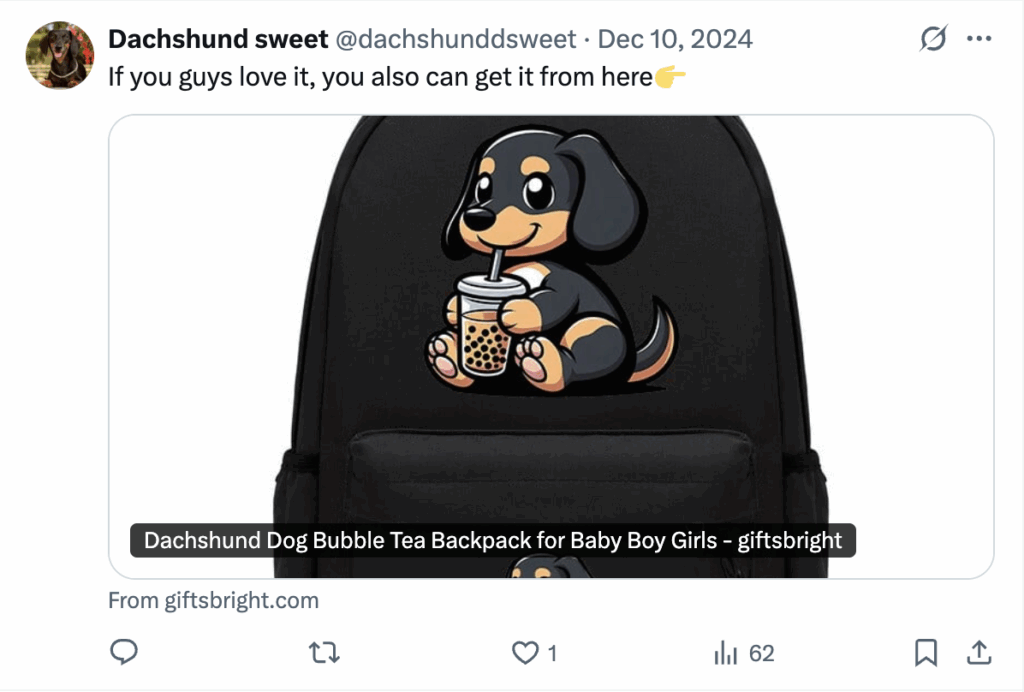
I’m sure it’s real & I’m buying one for all my friends.
This behavior isn’t theoretical. It’s Dead Internet Theory in motion, bots and slop creating the illusion of activity, only to reveal their true purpose when the stakes are highest. AI slop isn’t just clutter in the feed. It’s the scaffolding for influence campaigns and junk commerce.
Bot Handles and the Illusion of Community
These datasets make the pattern even clearer. Page after page of accounts share the same formulaic construction: handles padded with underscores (__dlawliet__, __BlackKMamba__), stuffed with numbers (5487, 07chat29, 0514Guiviel), or randomized blends of words and digits (0x_CoinCatalyst, 1821_crying). Many of these usernames appear multiple times across the dataset, suggesting automation rather than individuality. The uniformity of these handles is a telltale sign of coordination: interchangeable accounts that can easily pivot from parroting “great photograph” captions to peddling low-quality AI merch, or during election cycles, amplifying political messaging.
If you want to investigate the data yourself, email me, and I’ll send you what I found.
What Brands Should Do Instead
The lesson here isn’t “don’t use AI.” It’s don’t settle for slop.
- Hybrid creativity: Pair AI tools with human storytellers, not as a replacement but an amplifier.
- Show the process: People respond to transparency. Let them see the sketch, the behind-the-scenes, the human hand.
- Lean into imperfection: Raw, messy, emotional content will feel refreshing in a feed full of polished sludge.
- Use AI for insights, not filler: Let the machine analyze, but let the human craft.
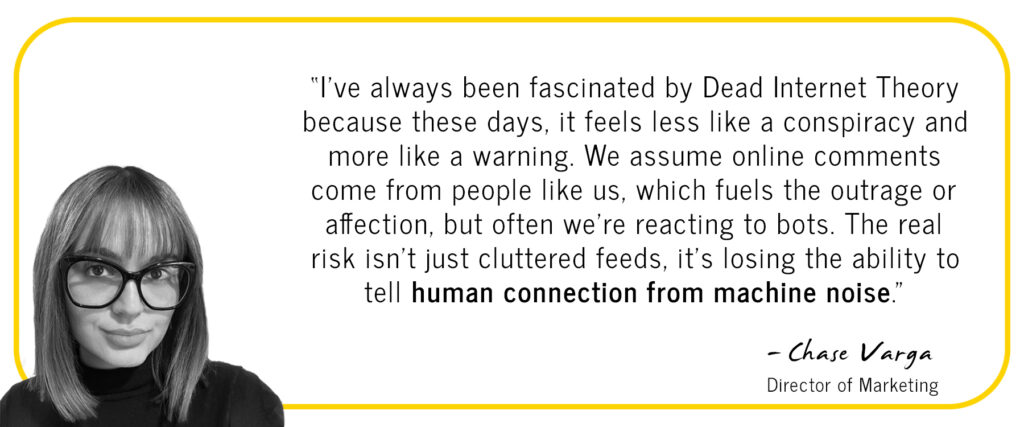
Final Thought
We’ve seen this movie before. Instagram filters became clichés. Clickbait headlines burned out. The pendulum swings.
AI Slop is already sparking backlash. The brands and creators who come out on top won’t be the ones who drown their feeds in generated filler. They’ll be the ones who remind audiences what real creativity feels like.
Because in a world of Shrimp Jesuses, cat soap operas, and a creeping sense that the internet is already half-dead, authenticity isn’t just a buzzword.
It’s survival.
Sources
- Wikipedia. AI Slop. https://en.wikipedia.org/wiki/AI_slop
- Business Insider. Meta won’t ban AI ‘Slop’ images like Shrimp Jesus from Facebook—here’s why. (June 2024). https://www.businessinsider.com/meta-facebook-ban-ai-slop-images-shrimp-jesus-why-2024-6
- Business Insider. Shrimp Jesus and the rise of a zombie internet. (May 2024). https://www.businessinsider.com/facebook-ai-shrimp-jesus-zombie-internet-spam-content-2024-5
- Harvard Misinformation Review (Stanford/Georgetown study). How spammers and scammers leverage AI-generated images on Facebook for audience growth. (March 2024). https://misinforeview.hks.harvard.edu/article/how-spammers-and-scammers-leverage-ai-generated-images-on-facebook-for-audience-growth/
- The Guardian. Cat soap operas and babies trapped in space: the AI slop taking over YouTube. (August 2025). https://www.theguardian.com/technology/2025/aug/11/cat-soap-operas-and-babies-trapped-in-space-the-ai-slop-taking-over-youtube
- The Guardian. AI has created a new breed of cat video: addictive, disturbing and nauseatingly quick soap operas. (August 2025). https://www.theguardian.com/culture/2025/aug/18/ai-has-created-a-new-breed-of-cat-video-addictive-disturbing-and-nauseatingly-quick-soap-operas
- Medium (Olin researchers). Content Creation Fatigue: Why Users Are Ditching AI Writing Tools in 2025. (2024). https://medium.com/@meyarbrough_55952/content-creation-fatigue-why-users-are-ditching-ai-writing-tools-in-2025-87f2ccf5f5ff
- RAKEZ / NP Digital. AI fatigue is real: Return of grit-based creativity. (2024). https://rakez.com/en/media-centre/news-detail/articleid/1611/ai-fatigue-is-real-return-of-grit-based-creativity
- TechRadar. Clients are increasingly looking for unique human creativity—demand for creative freelancers is surging despite AI going mainstream. (2025). https://www.techradar.com/pro/clients-are-increasingly-looking-for-unique-human-creativity-research-finds-demand-for-creative-freelancers-is-surging-despite-ai-going-mainstream
- arXiv. The Dead Internet Theory (DIT): Corporate exploitation of online spaces and the decline in authentic human interaction. (January 2025). https://arxiv.org/abs/2502.00007
- ListenFirst. Internal dataset analysis of “Great Photography” and “Great Photograph” posts. https://www.listenfirstmedia.com

